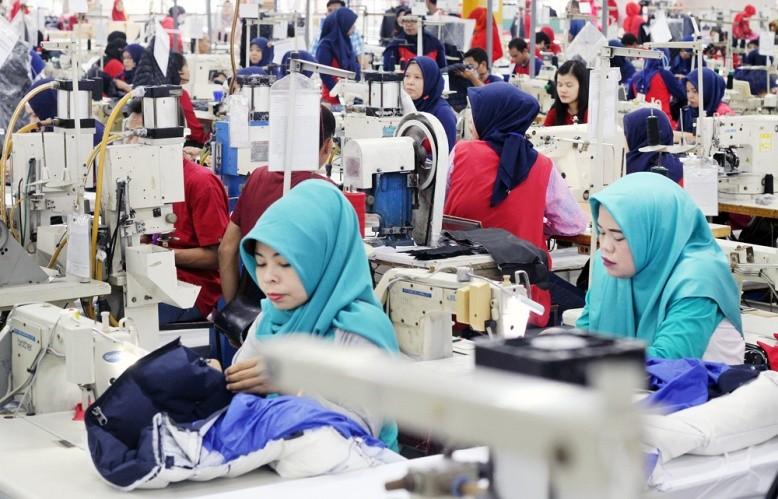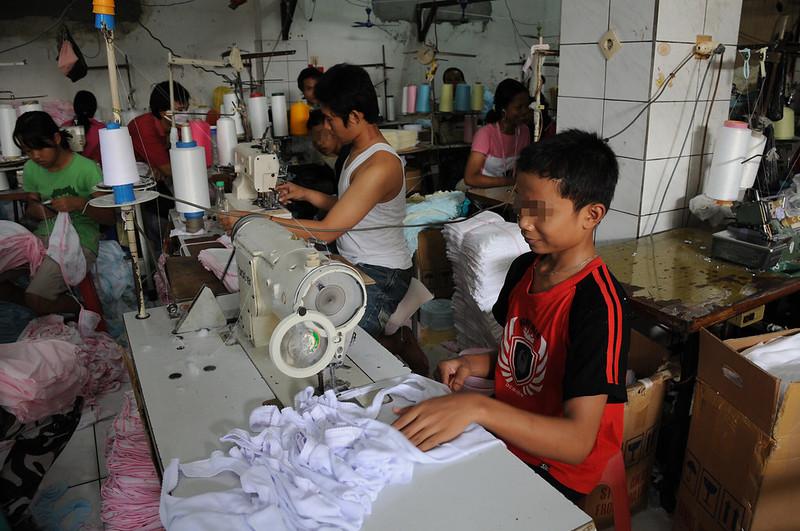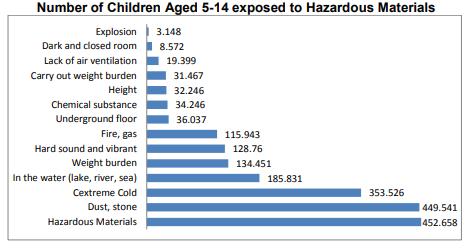Factories around the world are required to ensure fair working conditions, including the health, safety, fair compensation, and well-being of the employees, as well as reducing the risks and hazards in the factories where they work. In some countries and industries, however, workers still face unethical treatment, particularly in the garments industry where there is high pressure for lowering production costs so brands can maintain competitive pricing in stores.
This article will explore factory working conditions in Indonesia’s garments industry, including Indonesian factories’ adherence to fair labor practices and protection of worker health and safety, and the country’s efforts to address child labor.
Background information: Working Conditions in Indonesia
Table of Contents
Garment Factories in Indonesia
Adherence to Fair Labor Practices
Labor Health and Safety in Textile Production
Child Labor in Garments Factories
Garment Factories in Indonesia
In 2019, the United Nations Statistics Division reported that Indonesia ranked 10th among the world’s largest manufacturing countries, particularly for “fast fashion” (cheaply and quickly made clothing). Today, many foreign companies choose to produce their products in Indonesia because of the country’s low-cost services and high labor availability. In fact, Indonesia produces around 2.4% of the world’s textiles, making fabric a one of the country’s biggest exports.
Manufacturing factories in Indonesia employ around 25 million people and provide services to a wide variety of well-known brands, such as Nike, Adidas, Tommy Hilfiger, and Calvin Klein. Manufacturing plays an extremely important role in Indonesia’s economy, accounting for almost 25% of the country’s annual GDP.
Despite the manufacturing sector’s significant contributions to Indonesia’s economic well-being, factories in Indonesia do not always provide safe and equitable working conditions for their workers. This article will examine several categories to assess working conditions in Indonesia’s garment factories today.

Adherence to Fair Labor Practices
Fair labor practices refer to the rights given to employees inside an organization. This broad category consists of fair treatment, sufficient compensation and benefits, mutual respect, freedom, and more.
In 2011, researchers discovered that the majority of factory workers in Indonesia who made products for well-known sportswear brands had short contracts, meaning many workers were only employed for around 6 months. These factory workers were often hired by private agencies that did not provide benefits such as paid annual leave, separation pay, paid sick leave, and even a written contract.
During peak seasons, these factories often allowed people to apply for permanent positions, only to dismiss them after the 3-month probationary period (and peak season) had passed. A lack of permanent and reliable employment left many workers desperate and unable to obtain basic necessities. The 2011 research also revealed that most factory workers hired by private agencies experienced forced overtime and exploitation as a result of pressure to meet increased production quotas while receiving a wage below Indonesia’s legal minimum.
In response to these unethical working conditions, the International Labour Organization (ILO) and International Finance Corporation (IFC) established the Better Work Program in 2011, which provides programs that aim to help improve factory working conditions in Indonesia, especially in the textile and garment industries.
However, many factories in the country still don’t adhere to the standards of the Better Work Program, and many factories continue to operate unethically. More recent instances of unethical factory working conditions in Indonesia are not uncommon.
For example, in 2015, two factories in Indonesia went bankrupt and immediately ceased their operations when Uniqlo ended its partnership with the manufacturing business. More than a thousand factory workers were immediately laid off without warning and were left unpaid for their work. The workers revealed to the press that they experienced unethical working conditions, such as forced overtime to meet unrealistically high production quotas.
During the peak of the Covid-19 pandemic season, it was alleged that several Indonesian factories failed to pay their workers full wages.
Labor Health and Safety in Textile Production
Labor health and safety are critical aspects of ensuring ethical working conditions. It includes the elimination of any hazards that might harm the workers’ mental, emotional, and physical health, as well as the provision of necessary equipment and sometimes health insurance to keep workers healthy and safe.
Indonesia’s Work Safety Act aims to safeguard workers’ rights through occupational safety regulations. Despite the implementation of this law in 1970 and subsequent updates, many factories still fail to ensure safe working conditions.
In Indonesia, around 200 workers die each year due to work-related accidents, and millions suffer from injuries and degradation of their health due to unsafe working conditions. In 2015 alone, more than 100,000 work-related accidents were recorded in Indonesia, with more than 2,000 of them being severe cases.
Labor health and safety are often not properly addressed in Indonesia’s textile and garment manufacturing industries. The most common workplace safety concern in this industry is that some factories fail to provide proper ventilation and protective gear, putting workers’ health at risk due to constant exposure to dust and fiber particles. In other cases, women factory workers in the textile and garment industry are subjected to sexual harassment.
The garments and textile industry in Indonesia also uses large amounts of toxic chemicals to process and dye clothing. Not only are workers exposed to these toxic chemicals, including mercury, cadmium and arsenic, but these chemicals are released into nearby rivers, contaminating local communities’ water supply.
Child Labor in Garments Factories
Children in Indonesia are commonly subjected to child labor. More than 4 million children ages 5-17 years old work in different industry sectors, such as the agriculture and garment manufacturing industries.
In Indonesia, the legal working age is 15 years old. Although 13-year-olds are also permitted to work, they must first get parental or guardian approval, and they may only work for a maximum of three hours per day, as long as the employment does not negatively impact the children’s physical, social, or mental well-being. Many companies, however, disregard these limits and rely on the labor of children 13 and younger.

Children ages 5-14 in Indonesia are exposed to a variety of risks and hazards in factories, including poor ventilation that causes respiratory illnesses, chemical substances, and dust. Many child workers also work extremely long hours in clothing factories, producing clothing in poor conditions for well-known American companies including H&M and Gap. Some working children are compelled to lift heavy objects and are exposed to flammable or toxic materials. Unsafe factory working conditions for child laborers are not limited to just the clothing industry, but instead, are prevalent in nearly every type of manufacturing in Indonesia. In 2017, two illegally-employed child laborers ages 14 and 15 were killed in a firework factory after the gunpowder in the factory’s storage accidentally ignited.

In 2015, the Indonesian government pledged to end child labor in the country by 2022. In order to achieve a reduction in child labor, the government intended to strengthen its educational system in order to encourage children to stay in school rather than work. At the same time, their parents and guardians would be taught about the value of education for their children’s future.
A good amount of progress towards this goal has been made, as the number of child workers decreased from four million in 2009 to 2.9 million in 2018. Although it is unclear what the exact number of child workers is in 2022, progress has been difficult to achieve since the onset of the COVID-19 pandemic. Due to lockdowns and onsite school closures, children have become more susceptible to exploitation, as many have chosen to work instead in order to provide for their families.
